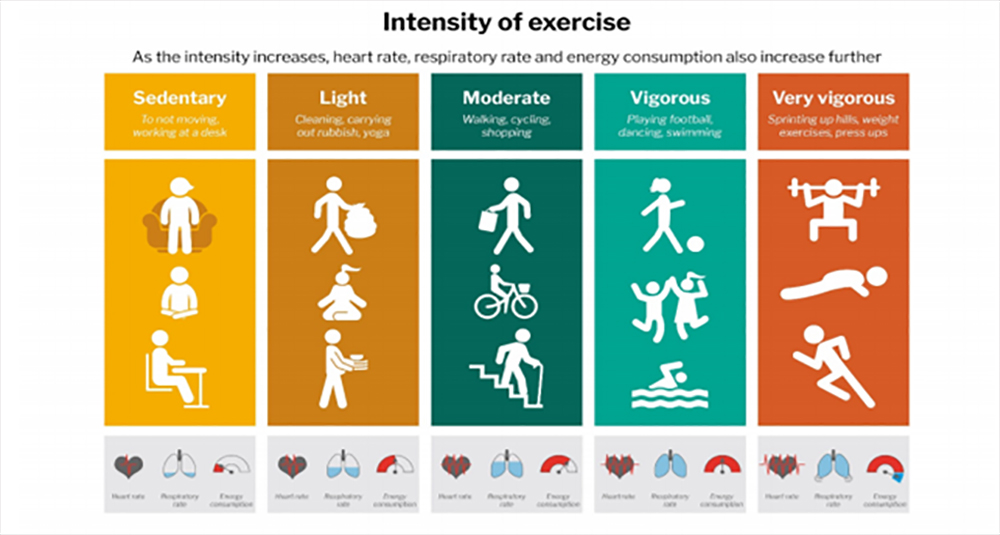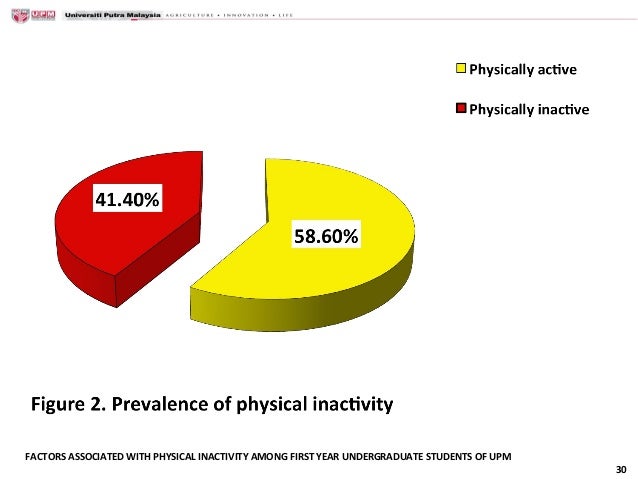


It is recommended that adults engage in moderate-intensity physical activities (defined as those activities that lead to notable increases in heart rate and breathing) for at least 30 minutes per day, five days per week. The best “dose” of physical activity is a combination of duration, intensity, and frequency of exercise. However, it is important to note that vigorous exercise in untrained individuals elevates the risk for coronary heart disease.

This trend of association remained constant regardless of any major exercise types such as swimming, jogging, and cycling. They found that there was a dose-dependent relationship between exercise and coronary heart disease incidents. In a study published in 2002, researchers analyzed the relationship between occupational activity and leisure time in 40,000 people over 12 years of time. So, when there is no muscle contraction, visceral fat accumulates, which again, is one of the sources of systemic inflammation and is recognized as one of the leading risk factors for developing dozens of chronic diseases (Booth et al., 2012). Some cytokines may work exerting specific endocrine effects on visceral fat metabolism and anti-inflammatory functions through signaling pathways involved in fat oxidation (So et al., 2014). These cytokine messengers may trigger specific metabolic pathways in different tissues, including the endothelium, as well as other organs and tissues such as visceral fat, bone, liver, and nervous system. Studies have shown the part of the protective effects of physical activity is mediated by the secretion of cytokines during skeletal muscle contraction. These molecular signaling pathways are critical to understanding how exercise affects heart health. At the molecular level, endothelial functions include promoting the growth of preexisting coronary vessels, rejuvenating the endothelium (heart lining), and decreasing the production of reactive oxygen species (toxic substances to cells) (Winzer, 2018). The endothelium is the innermost lining of our blood vessels and plays a vital role in ensuring the delivery of oxygen and nutrients to all tissues. Physical inactivity alters the risk for coronary heart disease by modulating the effect of other “classic” risk factors such as obesity, hypertension, and smoking, on endothelial function (Winzer, 2018). Consider consulting a clinician because not everyone’s exercise tolerance is the same and one does not want to invite a cardiac event by engaging in an exercise routine beyond the safe limits. But before embarking on an exercise regimen, use caution. Vigorous activity is an activity intense enough to make the heart beat fast (70-85% of its maximum recommended rate) for at least 20 minutes, 3 times a week. Moderate activity increases your heart rate to 50-70% of its maximum recommended rate. Sustained physical activity usually means activity of any intensity lasting 30 minutes or more 5 times a week. The American Heart Association recommends 30-60 minutes of aerobic exercise three to four times per week to promote cardiovascular fitness. “Physical inactivity” also known as being sedentary, is a term used to identify people who do not get the recommended level of regular physical activity. But, how much “dose” of “activity” do we actually need to prevent heart disease?ĭefining Physical Inactivity, Sustained, and Vigorous Activity These findings raise concerns in many of us to increase our level of exercise. The level of physical activity in adults is a strong independent indicator of coronary heart disease risk. The New York Department of Health estimates that 35% of the ~700,000 coronary heart disease deaths in the United States each year are due to physical inactivity. Medically reviewed by: Robert Philibert MD PhD


 0 kommentar(er)
0 kommentar(er)
